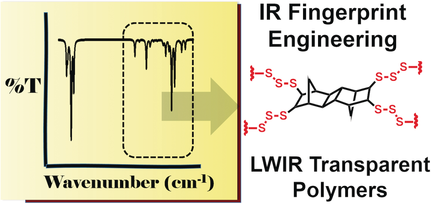Infrared Fingerprint Engineering: A Molecular-Design Approach to Long-Wave Infrared Transparency with Polymeric Materials
Graphical Abstract
Dancing in the dark: The synthesis of chalcogenide hybrid inorganic/organic polymers with enhanced long-wave infrared (LWIR) transparency is reported. Through the design of organic molecules based on DFT computations and IR-fingerprint engineering, a new class of polymers for LWIR thermal imaging is developed.
Abstract
Optical technologies in the long-wave infrared (LWIR) spectrum (7–14 μm) offer important advantages for high-resolution thermal imaging in near or complete darkness. The use of polymeric transmissive materials for IR imaging offers numerous cost and processing advantages but suffers from inferior optical properties in the LWIR spectrum. A major challenge in the design of LWIR-transparent organic materials is that nearly all organic molecules absorb in this spectral window which lies within the so-called IR-fingerprint region. We report on a new molecular-design approach to prepare high refractive index polymers with enhanced LWIR transparency. Computational methods were used to accelerate the design of novel molecules and polymers. Using this approach, we have prepared chalcogenide hybrid inorganic/organic polymers (CHIPs) with enhanced LWIR transparency and thermomechanical properties via inverse vulcanization of elemental sulfur with new organic co-monomers.





